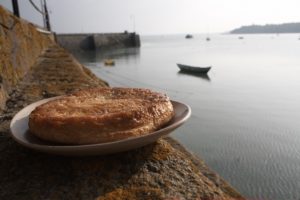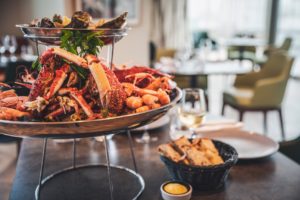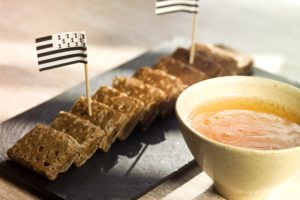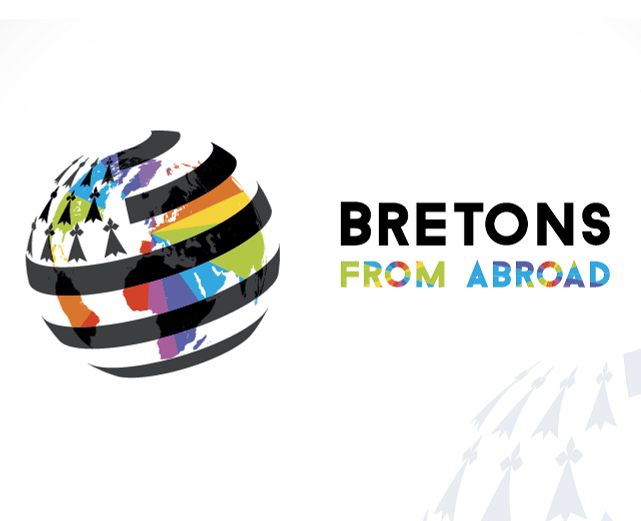Food
Most of the food in Brittany is casually French, and visitors will find the familiar croissants, baguettes, ham sandwiches and restaurants’ menus. But they will also find more crêperies than in the rest of the country (where there are many, though), because this is typically Breton.

Crêpes (made with wheat flour) and galettes (similar but darker, made with buckwheat flour) are a Breton symbol, recognized as such in all the country (all the crêperies in France and beyond are adorned with Breton symbols). They can be eaten with about anything, the galettes usually as a main course for instance with ham, cheese, eggs, and the crêpes as a dessert with chocolate or just sprinkled with sugar. Crêperies routinely offer more than a dozen recipes for either crêpes or galettes. In a fest-noz or at a sport event, it is not unusual to eat a sausage wrapped in a galette.

It would be a pity, however, to limit Breton food to this. In many bakeries in Brittany you will also find kouign amann alongside the brioches, for instance, a pastry with an incredible amount of butter. It is not so common outside in the country but many others are, such as:
- The quatre-quarts (four quarters, of sugar, flour, eggs and butter), a staple in kids parties for instance,
- The petit-beurre, a biscuit originally manufactured in Nantes,
- The palet breton, a round and brittle cookie,
- The crêpe dentelle, or gavotte, a small dried crêpe rolled and flattened into a finger biscuit,
- The BN, a biscuit that all French kids and adults know but most are unaware that BN stands for biscuit nantais (biscuit from Nantes),
- The galettes, another cookie (galette actually mean something round and flat)…

All these items can be found in supermarkets all around the country, as well as caramel au beurre salé (salted butter and caramel) spreads or toffees. Some cakes, such as the Breton cake, the gâteau nantais (cake of Nantes) or the far Breton (thick custard tart) are less common outside Brittany. Some are local such as the craquelin (a biscuit) of Saint Malo.
All bretons territories share one common culinary element: salted butter. Salt used to be a key ingredient for the conservation of food, and due to the historical autonomy of Brittany, it was less taxed in the region than in the rest of France. Don’t be surprised by the salty taste of even the sweetest of pastries…

Some recipes are notoriously Breton, starting with the lobster à l’Armoricaine (Armorique is a former name for Brittany) or the brochet au beurre blanc (pike in white butter). The kig ha farz (dish with several meats, vegetables and buckwheat pudding) is almost unknown outside Brittany.

Some of France’s best oysters can be found in Brittany, people eat them on the shore at Cancale, while looking at the Mont Saint Michel. Seafood is easy to find in the whole region (most seaside restaurants offer mussels and fries, for instance; mussels are typically cooked with white wine, cream and shallots) and Breton chefs are experts at cooking it.

Algae are not traditionally a food ingredient in Breton cuisine but they are increasingly used, Brittany being a leading producer. Health-conscious consumers are interested in their virtues, and the region intends to be one of the best “eating well” European territories.
In a crêperie, the typical drink will be the local cider, served in a bowl (if you prefer cola, there is a Breton brand). At the end of the meal, you might have a small glass of Chouchen, the Breton mead. There are also many local craft beers, with enough diversity for any taste.

And as if to highlight the difference between Brittany and the rest of France: no Breton cheese or wine is particularly famous!

